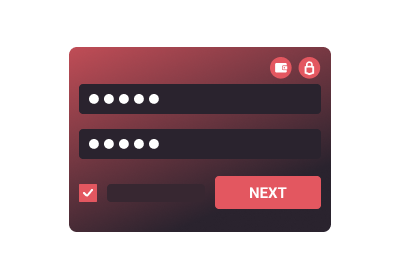Buy Litecoin with a Credit Card
You can buy LTC for USD and other fiat currencies here at SwapSpace! We provide an easy way to do that via one of our partners, such as Mercuryo, Guardarian, or Simplex, with a few simple steps right on this page. You can also look at Litecoin price dynamics and history, get some answers to your questions, and find some useful links to read more about what is LTC.
Litecoin Live Price Chart
LTC price can be volatile. You can see the history of price changes in the cryptocurrency price chart below to help you make the best decision while considering buying crypto.
What is Litecoin crypto?
Litecoin is a peer-to-peer cryptocurrency created by Charlie Lee, a former Google employee, in October 2011. Lee was inspired by Bitcoin and wanted to create a cryptocurrency that addressed some of Bitcoin's limitations while still maintaining its core principles. Lee identified several key areas where he believed Bitcoin could be enhanced. These included transaction speed, scalability, and the mining process.
Lee set out to create a new cryptocurrency that would address these issues. He chose to use Bitcoin's open-source code as the basis for his new project and made modifications to improve its performance. One of the most significant changes made by Lee was to implement a different hashing algorithm called Scrypt. This algorithm made Litecoin mining more accessible to individual miners and less susceptible to domination by large mining operations using specialized hardware (ASICs).
Litecoin was officially launched on October 13, 2011, via an open-source client on GitHub. Lee announced the launch on Bitcointalk forums and began actively promoting Litecoin within the cryptocurrency community.
Litecoin is often considered one of the early altcoins, or alternative cryptocurrencies, inspired by and technically similar to Bitcoin. However, Litecoin has some key differences:
- Faster transaction times: Litecoin's block generation time is approximately 2.5 minutes, compared to Bitcoin's 10 minutes. This faster block time allows transactions to be confirmed more quickly on the Litecoin network, leading to faster transaction speeds overall.
- Different hashing algorithm: Litecoin uses a different proof-of-work algorithm called Scrypt, whereas Bitcoin uses SHA-256. This makes Litecoin more resistant to ASIC mining, at least in its earlier days.
- Different supply limits: Litecoin has a higher maximum supply limit than Bitcoin. While Bitcoin has a maximum supply of 21 million coins, Litecoin has a maximum supply of 84 million.
Due to its similarities to Bitcoin and its active development community, Litecoin has often been used as a testbed for new features and innovations in the cryptocurrency space. This experimentation has led to the implementation of technologies such as Segregated Witness (SegWit) and the Lightning Network, which have subsequently been adopted by other cryptocurrencies.
SegWit is a protocol upgrade implemented on certain blockchain networks, including Bitcoin and Litecoin. It was activated on the Bitcoin network in August 2017 and on the Litecoin network in May 2017. The primary goal of SegWit is to address several issues in the Bitcoin and Litecoin networks, including transaction malleability, scalability, and the potential for network congestion.
SegWit achieves this by separating transaction signature data (witness data) from the transaction data, effectively "segregating" it into a separate data structure. By separating the witness data, SegWit frees up space within each block, allowing for more transactions to be included without increasing the block size limit.
SegWit also fixes transaction malleability, a vulnerability that could allow for the manipulation of transaction IDs, improving the security and reliability of the network.
The Lightning Network is a second-layer scaling solution designed to enable faster and cheaper transactions on blockchain networks, particularly Bitcoin and Litecoin.
It was proposed in a whitepaper released in 2015 and has been under development since then. The Lightning Network operates by creating off-chain payment channels between users, allowing for instant and nearly fee-less transactions that are settled later on the underlying blockchain.
Users can establish payment channels by committing funds to a multi-signature address, and then transact with each other through bi-directional payment channels. Transactions within the Lightning Network can be conducted rapidly and without the need for on-chain confirmation, making it ideal for microtransactions and frequent payments. Once users are finished transacting, they can close the payment channel and settle the final balances on the underlying blockchain. The Lightning Network has the potential to significantly increase the scalability and efficiency of blockchain networks while reducing transaction costs and latency.
Upon the mining of Litecoin's genesis block, approximately 500,000 LTC swiftly entered circulation, with Charlie Lee and presumably other early developers being among the initial miners. Despite this early accumulation, Litecoin operates as a fairly distributed asset. Unlike centralized systems, neither the Litecoin developers nor Charlie Lee directly profit from the ongoing operation of Litecoin beyond any rewards they may garner through standard mining activities. This commitment to decentralization reinforces Litecoin's ethos as a community-driven cryptocurrency, where rewards are earned through participation in the network rather than centralized control.
In late 2020, Litecoin made strides in enhancing its privacy and fungibility with the release of the MimbleWimble (MW) testnet. This testnet serves as a platform for experimenting with Mimblewimble-based confidential transactions on the Litecoin network. MimbleWimble is a privacy-focused protocol that aims to improve confidentiality and scalability by obfuscating transaction amounts and enhancing user privacy.
The integration of MimbleWimble on Litecoin's mainnet promises significant advantages for users. Once fully implemented, Litecoin users can expect heightened privacy and improved fungibility of their transactions. Confidential transactions ensure that transaction amounts are encrypted, shielding them from external observation. This enhancement not only safeguards users' financial privacy but also enhances the fungibility of Litecoin, as all coins become indistinguishable from each other, reducing the risk of censorship or discrimination based on transaction history.
Furthermore, MimbleWimble's scalability benefits are noteworthy. By aggregating transactions and removing unnecessary data, MimbleWimble allows for more efficient use of blockchain space, potentially leading to reduced transaction fees and faster confirmation times.
The successful activation of the MimbleWimble Extension Blocks (MWEB) upgrade on May 19, 2022, brought both advancements and challenges for Litecoin. However, this upgrade has drawn the attention of regulators who have reservations about privacy-enabled cryptocurrencies.
Several South Korean exchanges swiftly delisted Litecoin from their platforms shortly after MWEB went into effect. Exchanges such as Upbit, Bithumb, Coinone, Korbit, and Gopax took this action due to concerns arising from MWEB's enhanced privacy features. These exchanges cited their inability to comply with the Act on the Reporting and Use of Specific Financial Transaction Information, which mandates stringent measures against money laundering and illicit activities in South Korea's crypto space.
Under South Korean regulations, cryptocurrency exchanges are obligated to uphold transparency and accountability, necessitating the removal of currencies that offer users heightened privacy or anonymity features.
At the time of writing on April 16, 2024, the circulating supply of LTC is 74,428,781 tokens.
Litecoin is accepted at over 2,500 stores and merchants, including Travala, RE/MAX, and eGifter. Additionally, LTC holders can leverage their currency to acquire other cryptocurrencies on both centralized and decentralized exchanges (DEXs), expanding their investment options within the crypto ecosystem.
Where to buy Litecoin?
Litecoin stands out among cryptocurrencies due to its extensive range of fiat trading pairs. It's readily exchangeable for various fiat currencies such as U.S. dollars (USD), Korean won (KRW), euros (EUR), and more. Major exchanges facilitating these transactions include Huobi Global, Binance, Coinbase Pro, OKEx, and Kraken, among others.
The average fees on the Litecoin
The average fees on the Litecoin network can vary depending on factors such as network congestion, transaction volume, and the urgency of transactions.
Compared to Bitcoin, Litecoin generally has lower transaction fees due to its faster block generation time and higher network capacity. However, during periods of high demand or congestion, fees may increase temporarily.
At the time of writing in April 2024, the average Litecoin transaction fees are around $0.01.
The LTC token wallets
LTC tokens can be stored in the majority of the available crypto wallets, including Litecoin Core, Exodus, Electrum-LTC, Coinomi, LoafWallet (the official Litecoin wallet), Trust Wallet, Ledger Nano S, Ledger Nano X, Trezor, LiteVault and Guarda Wallet, etc.
How to Buy LTC on SwapSpace
On this page, we put USD in the “You send” and LTC in the “You get” sections in the widget. USD is the default, but you can choose your preferred fiat currency. Put in the amount of fiat you want to spend. Next, press the ”View offers” button and choose a provider.

Fill in the “Enter the recipient address” field with the destination Litecoin address. Check the information carefully and click the “Next” button. After reading the special terms and conditions in the next window, click “Next” again.

At this point, you will either see our partner’s widget or be redirected to another page, depending on the chosen provider. You will be asked to verify your identity, as this is standard practice for the services that work with fiat money. Follow the provider’s instructions on the screen.

After completing the KYC procedure, fill in your credit card information. At this point, everything is in place and your transaction will start.

Wait for the transaction to process. You’ll see a message when it’s completed. A window with your transaction details will also appear; from there, you can also create another crypto-fiat exchange.

